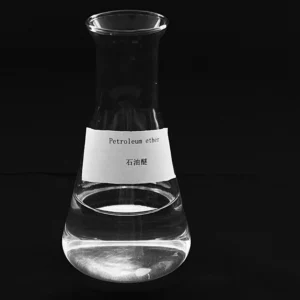Cellosolve, also known as ethylene glycol monomethyl ether (EGME), is a solvent commonly used in various industrial applications, including paint and coating formulations, cleaning products, and chemical manufacturing.
Its widespread use raises environmental concerns due to several reasons:
- Volatile Organic Compound (VOC) Emissions: Cellosolve is classified as a VOC, contributing to air pollution. VOCs can react with other compounds in the atmosphere to form smog or ground-level ozone, impacting air quality and human health.
- Potential Groundwater Contamination: Improper disposal or accidental spills of products containing cellosolve can lead to its release into soil and groundwater. It has the potential to leach into the ground, posing risks to aquatic ecosystems and drinking water sources.
- Aquatic Toxicity: Cellosolve can be harmful to aquatic organisms if released into water bodies. It has been shown to be toxic to certain aquatic species, affecting their reproduction, growth, and overall health.
- Biodegradability Concerns: Cellosolve may persist in the environment for an extended period, as it might not readily biodegrade under certain conditions. Its persistence can lead to long-term environmental impacts if not properly managed or treated.
- Health Concerns for Exposure: Cellosolve exposure can pose health risks to humans, including irritation of the eyes, skin, and respiratory tract. Prolonged or high-level exposure may cause more severe health effects, such as central nervous system depression, kidney or liver damage, and reproductive toxicity.
To mitigate the environmental implications of cellosolve usage, several measures can be taken:
- Substitution: Companies can explore alternative, less hazardous solvents or formulations to reduce reliance on cellosolve in various applications.
- Proper Handling and Disposal: Ensuring proper handling, storage, and disposal practices can minimize accidental releases or environmental contamination.
- Regulatory Compliance: Adherence to regulatory guidelines and standards regarding the use, handling, and disposal of cellosolve-containing products is crucial to minimize environmental impacts.
- Treatment Technologies: Efforts to develop and implement effective treatment technologies for wastewater containing cellosolve can help reduce its discharge into the environment.
Considering its potential environmental and health impacts, efforts to minimize the use and emission of cellosolve, alongside responsible management and disposal practices, are essential to mitigate its adverse effects on the environment and human health.
What are some safety considerations when handling Cellosolve in various industries?
Handling Cellosolve, also known as ethylene glycol monomethyl ether (EGME), in various industries requires adherence to safety measures to minimize potential health hazards. Here are some safety considerations:
- Personal Protective Equipment (PPE): Workers handling Cellosolve should use appropriate PPE, including chemical-resistant gloves, safety goggles or face shield, lab coat or protective clothing, and respiratory protection if necessary. Follow the manufacturer’s recommendations for specific PPE.
- Ventilation: Ensure adequate ventilation in areas where Cellosolve is used or stored to prevent the buildup of vapors. Use local exhaust ventilation systems or work in well-ventilated areas to minimize inhalation exposure.
- Handling Procedures: Handle Cellosolve in a controlled manner to prevent spills or splashes. Avoid direct contact with skin, eyes, or clothing. Use suitable equipment for transfer, dispensing, and mixing.
- Storage: Store Cellosolve in tightly sealed containers in well-ventilated areas away from incompatible materials and sources of heat or ignition. Follow proper storage guidelines and labeling requirements.
- Emergency Response: Have spill response kits and materials readily available.China Cellosolve manufacturers Train personnel in proper spill response procedures and evacuation protocols in case of accidental release or exposure.
- Usage Guidelines: Follow recommended handling procedures and dosage guidelines provided by the manufacturer. Avoid using Cellosolve in areas with open flames, sparks, or hot surfaces.
- Training and Awareness: Provide comprehensive training to employees handling Cellosolve. Educate them about the potential hazards, safe handling practices, emergency procedures, and the use of protective equipment.
- First Aid: Ensure that first aid measures are available in case of exposure or contact. Have readily accessible eyewash stations, safety showers, and a well-equipped first aid kit.
- Monitoring and Control: Implement monitoring programs to regularly assess exposure levels in the workplace. Control measures should be adjusted based on monitoring results to maintain safe working conditions.
- Regulatory Compliance: Comply with local regulations, occupational exposure limits, and safety guidelines established by relevant authorities regarding the use, storage, handling, and disposal of Cellosolve.
It’s crucial to prioritize safety and take necessary precautions when handling Cellosolve due to its potential health hazards, including skin and eye irritation, respiratory effects, and systemic toxicity upon prolonged or high-level exposure. By following strict safety protocols, training employees, and maintaining a proactive safety culture, the risks associated with handling Cellosolve can be effectively minimized.
